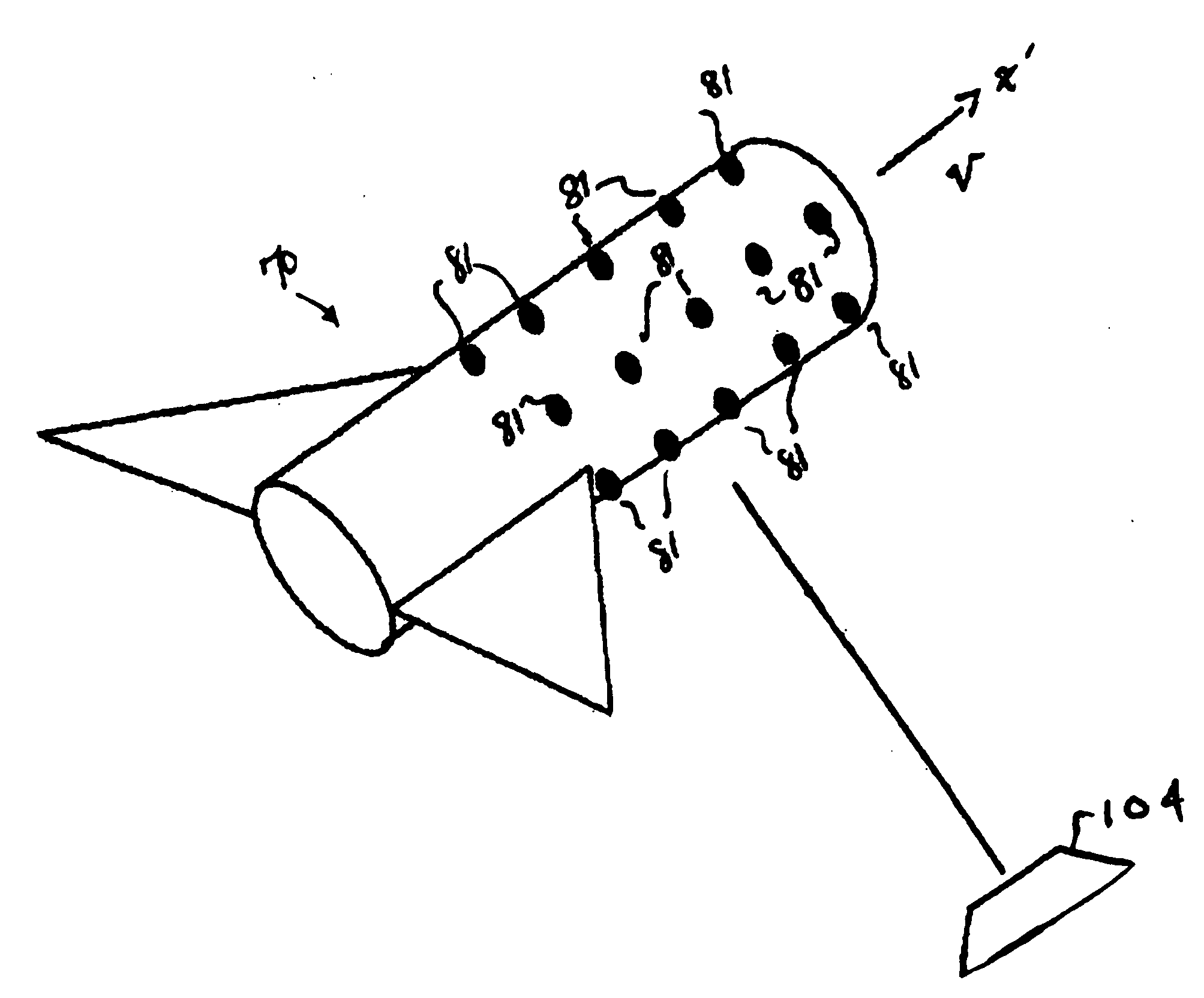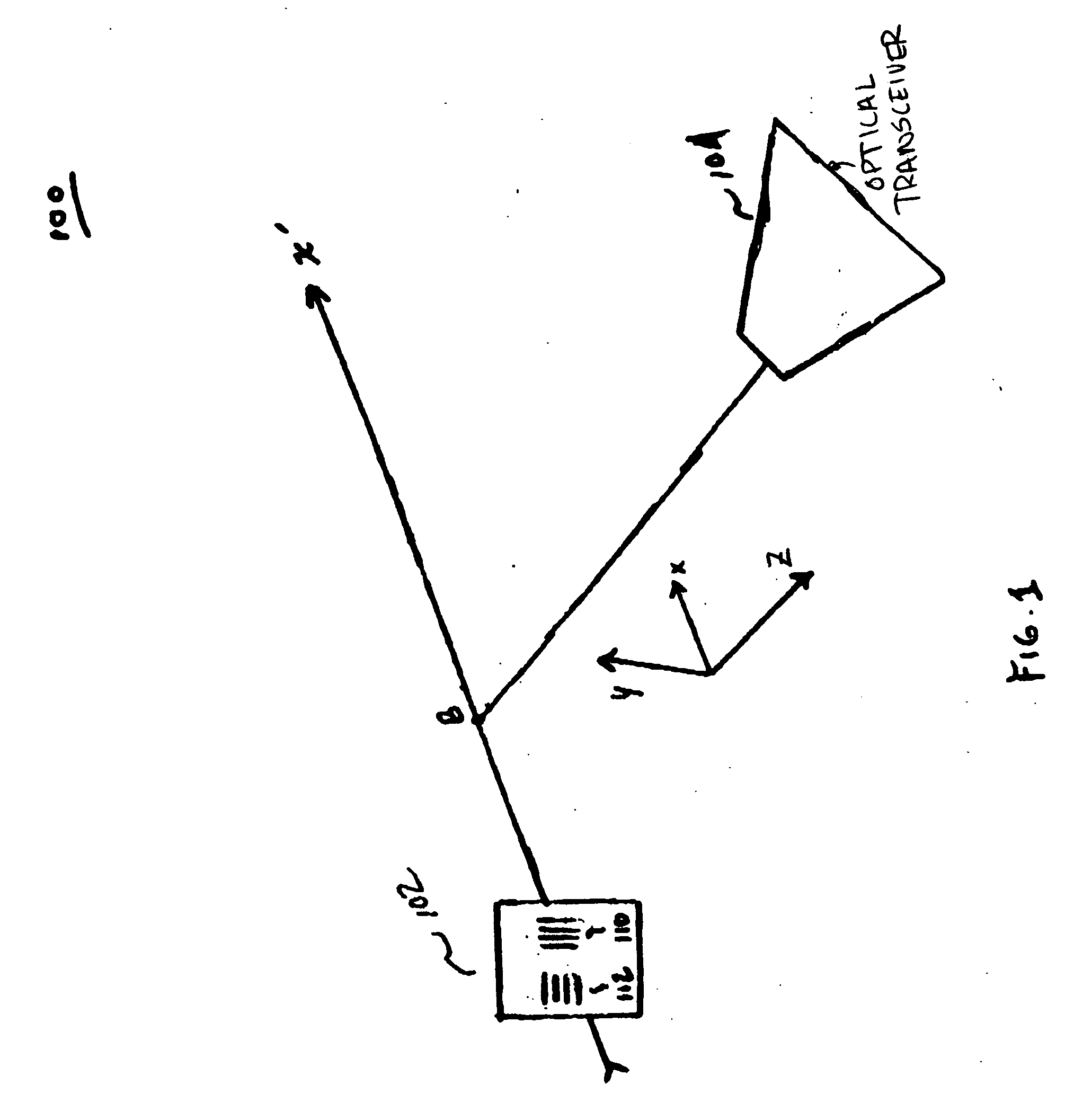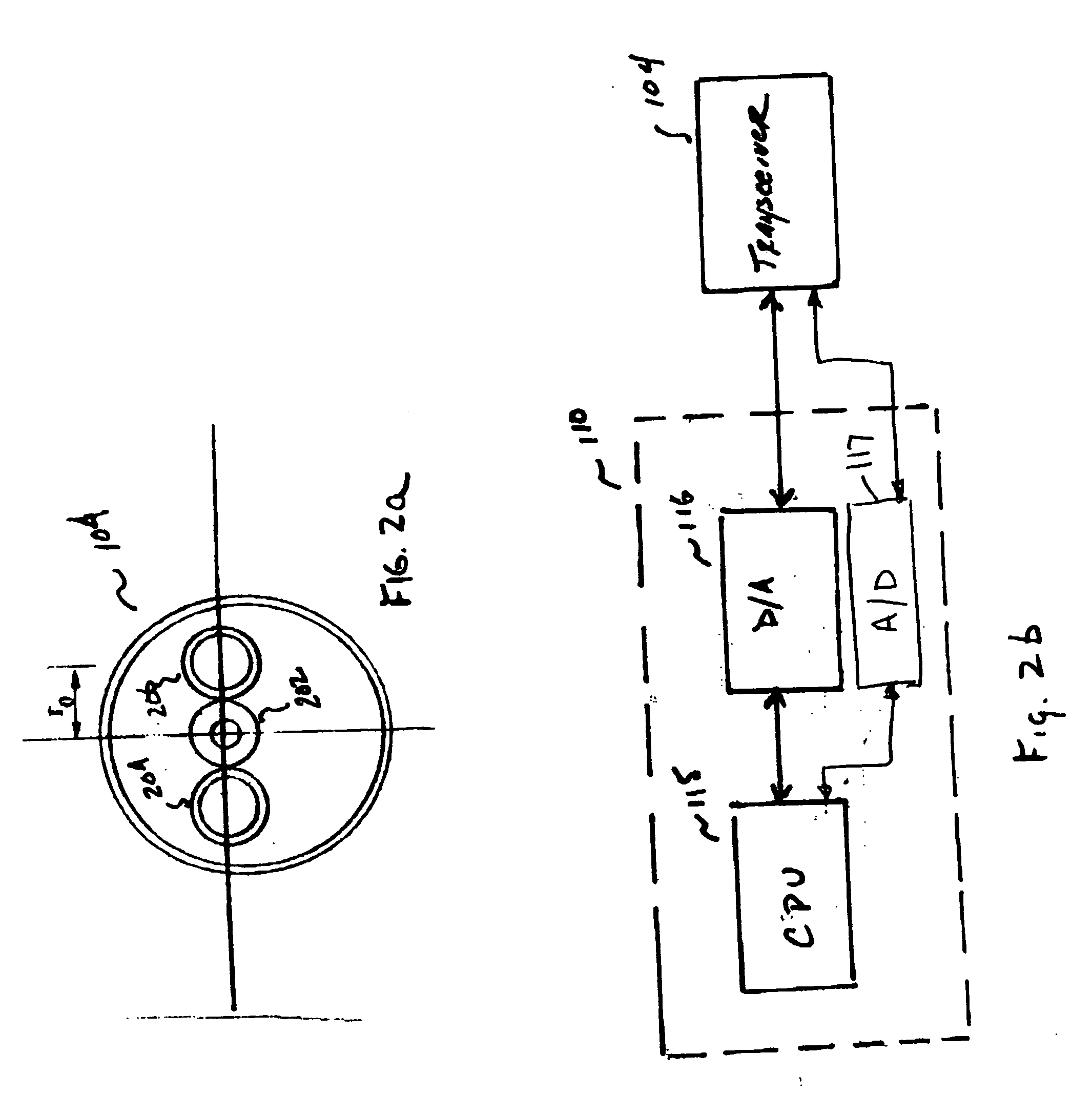System and method for the measurement of the velocity and acceleration of objects
a technology of velocity and acceleration, applied in the field of measurement systems and methods, can solve the problems of reducing the effect of disturbance, affecting the accuracy of measurement, so as to reduce the effect of disturbance and accurate measuremen
- Summary
- Abstract
- Description
- Claims
- Application Information
AI Technical Summary
Benefits of technology
Problems solved by technology
Method used
Image
Examples
first embodiment
I. FIRST EMBODIMENT
[0039] With reference now to FIG. 3, one embodiment of the present invention is directed to the measurement of the position, instantaneous linear velocity VL and instantaneous linear acceleration AL of an essentially cylindrical object 30 that is traveling along a linear path X′ while rotating about its longitudinal axis of symmetry (in this case the line X′), as well as the measurement of its instantaneous angular velocity VR about the line X′.
[0040] The first step in making a position and a time-of-flight measurement of an object 30 is to prepare the object 30 by applying (i.e., painting, etching, etc.) a plurality of linear velocity measurement lines 33 and a plurality of angular velocity measurement lines 34 to the surface of the object 30. As shown in FIG. 3, linear velocity measurement lines 33 are applied perpendicular to the direction of linear motion X′. Angular velocity measurement lines 34 are applied parallel to the direction of linear motion X′. It s...
second embodiment
II. SECOND EMBODIMENT
[0049] In the second embodiment, alternative surface features are illustrated which can be used to measure both linear and rotational velocity of a cylindrical object translating parallel and rotating about its centerline.
[0050] The success of the present embodiment depends upon the application of appropriate combination of surface features to the object 30. The present embodiment will be described with reference to FIGS. 4a-b. In all the cases presented for the present embodiment,
[0051] With reference first to FIG. 4a, the object 30 is first prepared or modified by applying a surface feature in the form of an equilateral triangle 43, and lines 44a-c and lines 44d-f to the surface of the object 30 to measure the linear velocity VL and rotational velocity VR of the object. As shown, the measurement lines consist of a centrally positioned equal sided triangle 43 and two sets of measurement lines 44a-c, 44d-f. As shown, measurement lines 44a-c are positioned to o...
third embodiment
III. THIRD EMBODIMENT
[0067] The third embodiment is directed to determining the linear and rotary position, velocity and acceleration of an object of arbitrary shape undergoing planar motion.
[0068] With reference now to FIG. 5, object 60 is considered to be undergoing a planar motion. The Cartesian XYZ coordinate system is fixed to the object 60. The planar motion of the object 60 is considered to be parallel to the XY plane of the XYZ coordinate system.
[0069] In the first case of this embodiment, the object 60 is considered to be undergoing a linear translation. Without the loss of generality, the linear motion of the object 60 is considered to be parallel to the direction of the X-axis of the XYZ coordinate system.
[0070] A shown in FIG. 5, there are shown a plurality of equally spaced parallel lines 62 on the surface of object 60. The lines 62 may or may not be perpendicular to the path of motion, i.e., perpendicular to the X-axis. The linear velocity V65 relative to a referenc...
PUM
 Login to View More
Login to View More Abstract
Description
Claims
Application Information
 Login to View More
Login to View More - R&D
- Intellectual Property
- Life Sciences
- Materials
- Tech Scout
- Unparalleled Data Quality
- Higher Quality Content
- 60% Fewer Hallucinations
Browse by: Latest US Patents, China's latest patents, Technical Efficacy Thesaurus, Application Domain, Technology Topic, Popular Technical Reports.
© 2025 PatSnap. All rights reserved.Legal|Privacy policy|Modern Slavery Act Transparency Statement|Sitemap|About US| Contact US: help@patsnap.com



